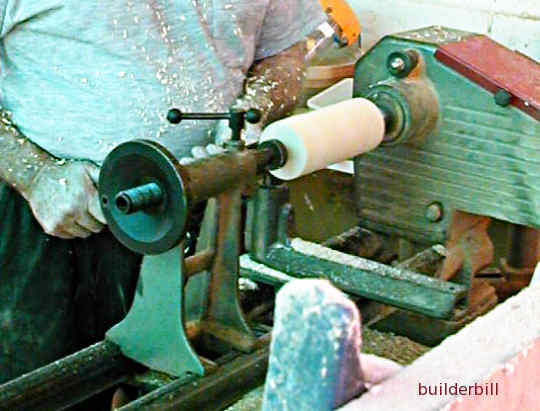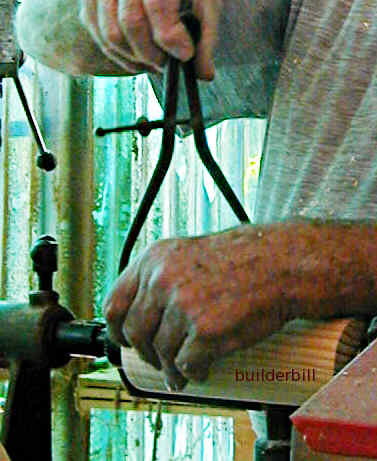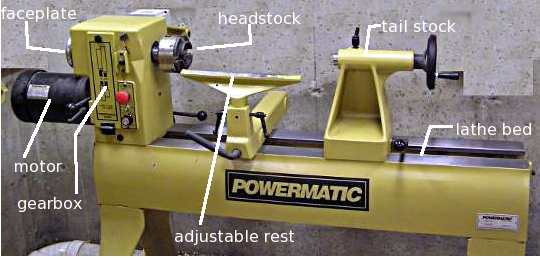 |
|||||||
Graphical Construction Glossary >> Tools. >> Power Tools >> Wood Lathe
Lathes for turning wood must be one of the oldest and first used machine tools. Initial they were driven by human power only, you can see an example of a foot powered one here. On this page we are looking at engine driven lathes which are almost exclusively driven by electric motors. Above, is a small electric powered wood turning lathe cutting a piece of softwood. To the right is a shot of the turner checking the outside diameter of a turning with a set of external spring callipers. Internal callipers are straight, almost like a pair of compasses, except that the last part of each leg turns outwards to enable them to gauge the internal size.
See the wood turning tools page for more lathe photos. If you didn't find exactly what you are looking for try this search tool that will search the site and the web. "What can be added to the happiness of a man who is in health, out of debt, and has a clear conscience? "When we build, let us think that we build for ever."John Ruskin 1819-1900 |
Hire Equipment  Furniture Fittings - Architectural Hardware - Electronic Locking Systems - Technical Hardware BuilderBill sponsorship Glossary Pages.Roof Glossary and Roofing Formwork Glossary and other tempory work. Hand Tools Glossary Power Tools Glossary Asbestos Glossary Woodwork Glossary Stair Glossary Concrete Glossary Masonry Glossary doors Glossary BuilderBill Books Building Maths  Stair Design  Asbestos Book |
||||||
|
|
|||||||
|
Please Note! The information on this site is offered as a guide only! When we are talking about areas where building regulations or safety regulations could exist,the information here could be wrong for your area. It could be out of date! Regulations breed faster than rabbits! You must check your own local conditions. Copyright © Bill Bradley 2007-2012. All rights reserved. |
|||||||


